Abstract
This paper sets a framework for the discussion of neurotoxicity as a potentially major contributor to the etiology of many types of mental retardation and developmental disabilities. In the past the literatures on developmental neurotoxicology and on mental retardation have evolved independently, yet we know that the developing brain is a target for neurotoxicity in the developing central nervous system through many stages of pregnancy as well as during infancy and early childhood. Our definitions and theories of mental retardation and developmental disabilities affect the models of neurotoxicity we espouse. For instance, models of developmental risk in neurotoxicology have guided environmental regulation to reduce the likelihood of neurotoxic effects. On the other hand, models of developmental risk for mental retardation aim not only at primary prevention,but also at secondary and tertiary prevention through early intervention. In the future, dynamic models of neuroplasticity based on the study of gene-brain-behavior relationships are likely to guide our views of developmental neurotoxicology and prevention of mental retardation and other disabilities.
Full text
PDF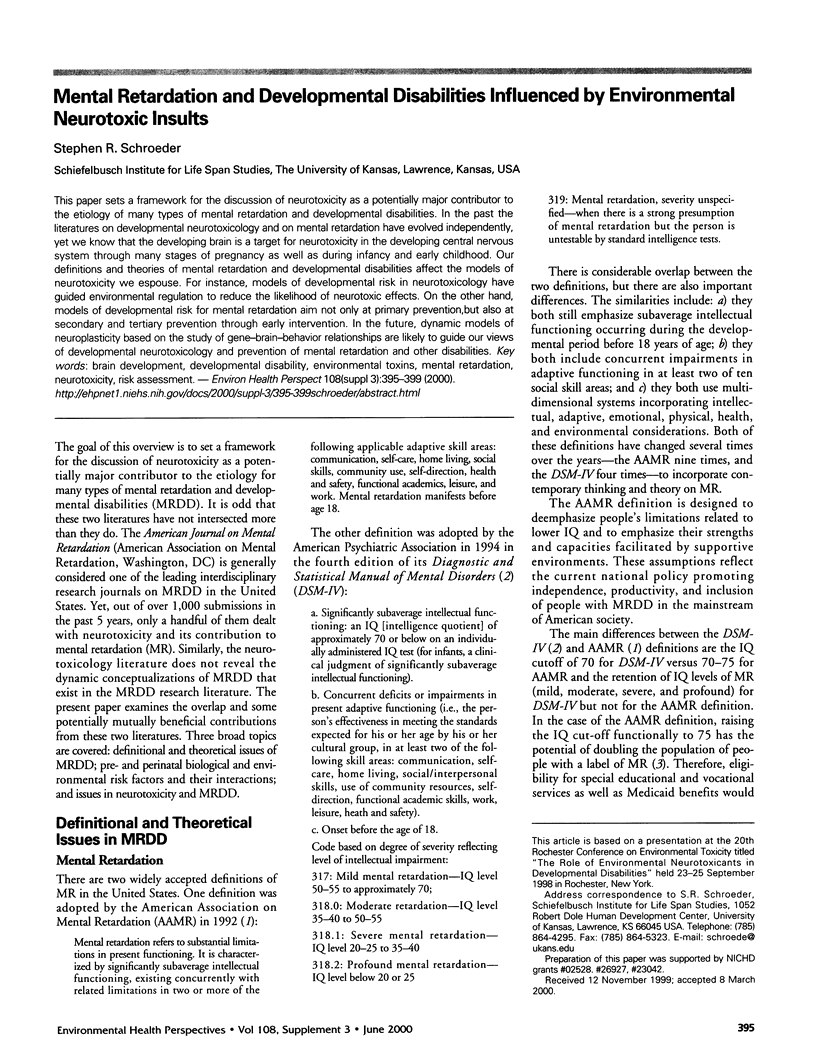
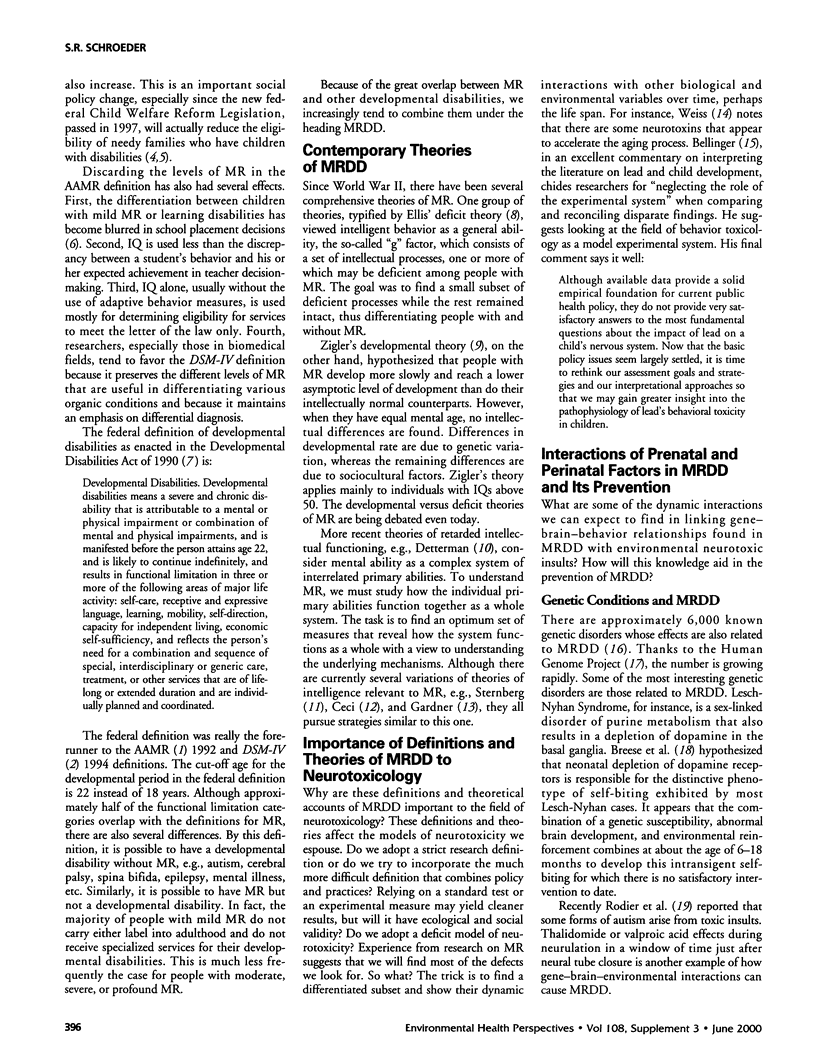
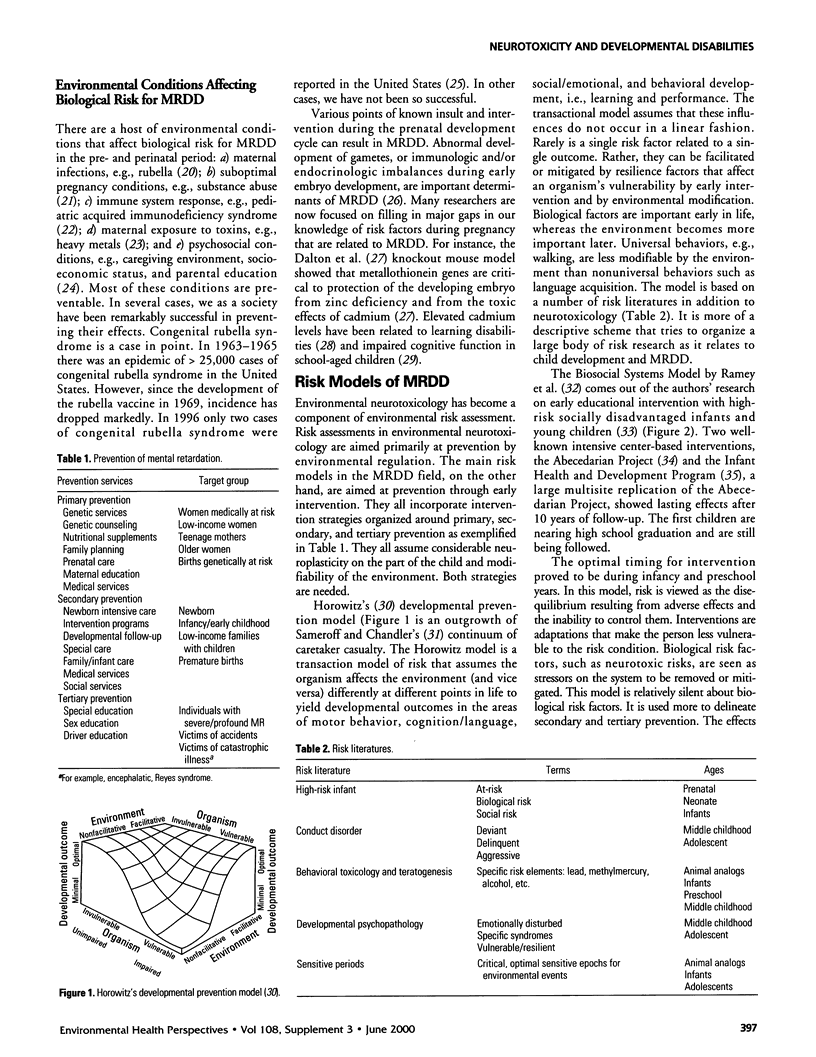
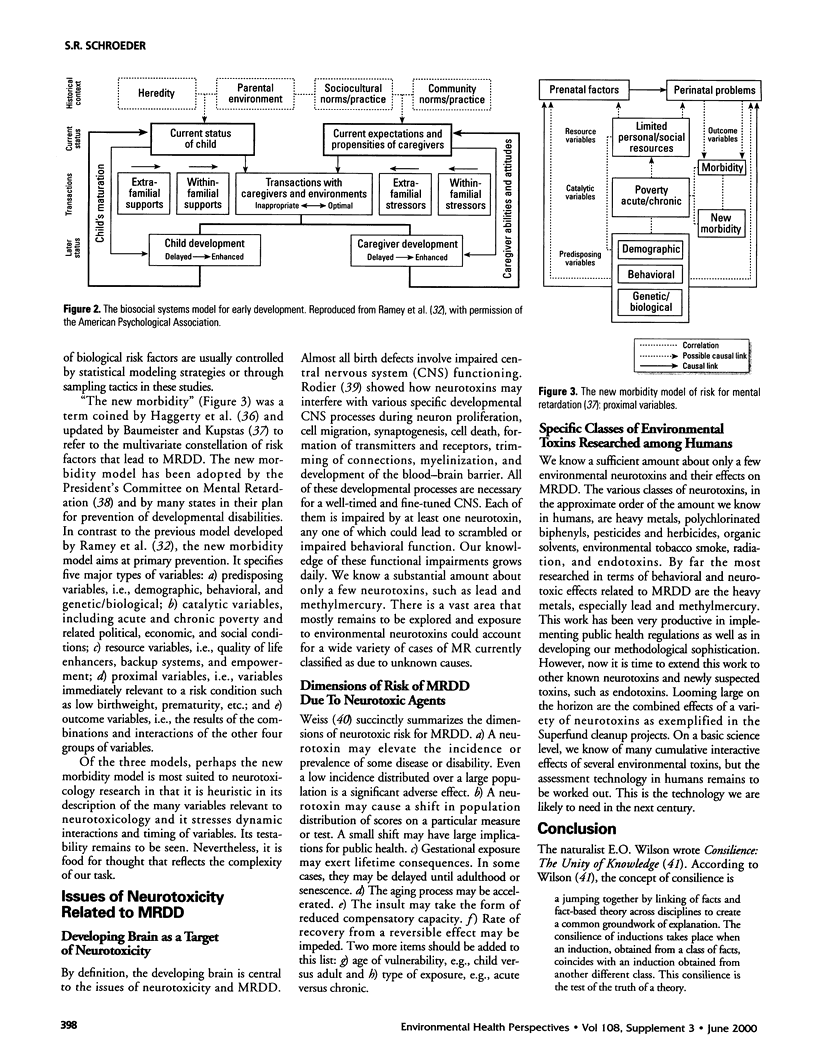
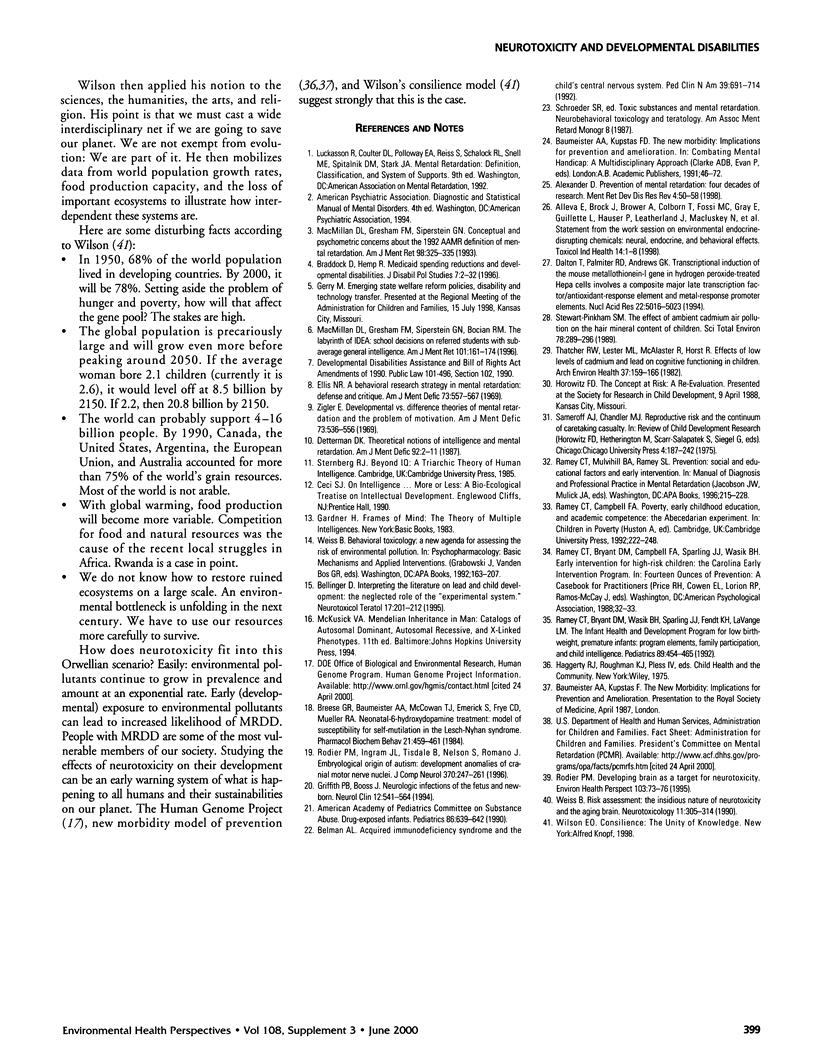
Selected References
These references are in PubMed. This may not be the complete list of references from this article.
- Bellinger D. C. Interpreting the literature on lead and child development: the neglected role of the "experimental system". Neurotoxicol Teratol. 1995 May-Jun;17(3):201–212. doi: 10.1016/0892-0362(94)00081-n. [DOI] [PubMed] [Google Scholar]
- Belman A. L. Acquired immunodeficiency syndrome and the child's central nervous system. Pediatr Clin North Am. 1992 Aug;39(4):691–714. doi: 10.1016/s0031-3955(16)38371-7. [DOI] [PubMed] [Google Scholar]
- Breese G. R., Baumeister A. A., McCown T. J., Emerick S. G., Frye G. D., Mueller R. A. Neonatal-6-hydroxydopamine treatment: model of susceptibility for self-mutilation in the Lesch-Nyhan syndrome. Pharmacol Biochem Behav. 1984 Sep;21(3):459–461. doi: 10.1016/s0091-3057(84)80110-0. [DOI] [PubMed] [Google Scholar]
- Dalton T., Palmiter R. D., Andrews G. K. Transcriptional induction of the mouse metallothionein-I gene in hydrogen peroxide-treated Hepa cells involves a composite major late transcription factor/antioxidant response element and metal response promoter elements. Nucleic Acids Res. 1994 Nov 25;22(23):5016–5023. doi: 10.1093/nar/22.23.5016. [DOI] [PMC free article] [PubMed] [Google Scholar]
- Detterman D. K. Theoretical notions of intelligence and mental retardation. Am J Ment Defic. 1987 Jul;92(1):2–11. [PubMed] [Google Scholar]
- Ellis N. R. A behavioral research strategy in mental retardation: defense and critique. Am J Ment Defic. 1969 Jan;73(4):557–566. [PubMed] [Google Scholar]
- Griffith B. P., Booss J. Neurologic infections of the fetus and newborn. Neurol Clin. 1994 Aug;12(3):541–564. [PubMed] [Google Scholar]
- MacMillan D. L., Gresham F. M., Siperstein G. N., Bocian K. M. The labyrinth of IDEA: school decisions on referred students with subaverage general intelligence. Am J Ment Retard. 1996 Sep;101(2):161–174. [PubMed] [Google Scholar]
- MacMillan D. L., Gresham F. M., Siperstein G. N. Conceptual and psychometric concerns about the 1992 AAMR definition of mental retardation. Am J Ment Retard. 1993 Nov;98(3):325–335. [PubMed] [Google Scholar]
- Ramey C. T., Bryant D. M., Wasik B. H., Sparling J. J., Fendt K. H., LaVange L. M. Infant Health and Development Program for low birth weight, premature infants: program elements, family participation, and child intelligence. Pediatrics. 1992 Mar;89(3):454–465. [PubMed] [Google Scholar]
- Rodier P. M. Developing brain as a target of toxicity. Environ Health Perspect. 1995 Sep;103 (Suppl 6):73–76. doi: 10.1289/ehp.95103s673. [DOI] [PMC free article] [PubMed] [Google Scholar]
- Rodier P. M., Ingram J. L., Tisdale B., Nelson S., Romano J. Embryological origin for autism: developmental anomalies of the cranial nerve motor nuclei. J Comp Neurol. 1996 Jun 24;370(2):247–261. doi: 10.1002/(SICI)1096-9861(19960624)370:2<247::AID-CNE8>3.0.CO;2-2. [DOI] [PubMed] [Google Scholar]
- Statement from the work session on environmental endocrine-disrupting chemicals: neural, endocrine, and behavioral effects. Toxicol Ind Health. 1998 Jan-Apr;14(1-2):1–8. doi: 10.1177/074823379801400103. [DOI] [PubMed] [Google Scholar]
- Stewart-Pinkham S. M. The effect of ambient cadmium air pollution on the hair mineral content of children. Sci Total Environ. 1989 Jan;78:289–296. doi: 10.1016/0048-9697(89)90039-9. [DOI] [PubMed] [Google Scholar]
- Thatcher R. W., Lester M. L., McAlaster R., Horst R. Effects of low levels of cadmium and lead on cognitive functioning in children. Arch Environ Health. 1982 May-Jun;37(3):159–166. doi: 10.1080/00039896.1982.10667557. [DOI] [PubMed] [Google Scholar]
- Weiss B. Risk assessment: the insidious nature of neurotoxicity and the aging brain. Neurotoxicology. 1990 Summer;11(2):305–313. [PubMed] [Google Scholar]
- Zigler E. Developmental versus difference theories of mental retardation and the problem of motivation. Am J Ment Defic. 1969 Jan;73(4):536–556. [PubMed] [Google Scholar]


